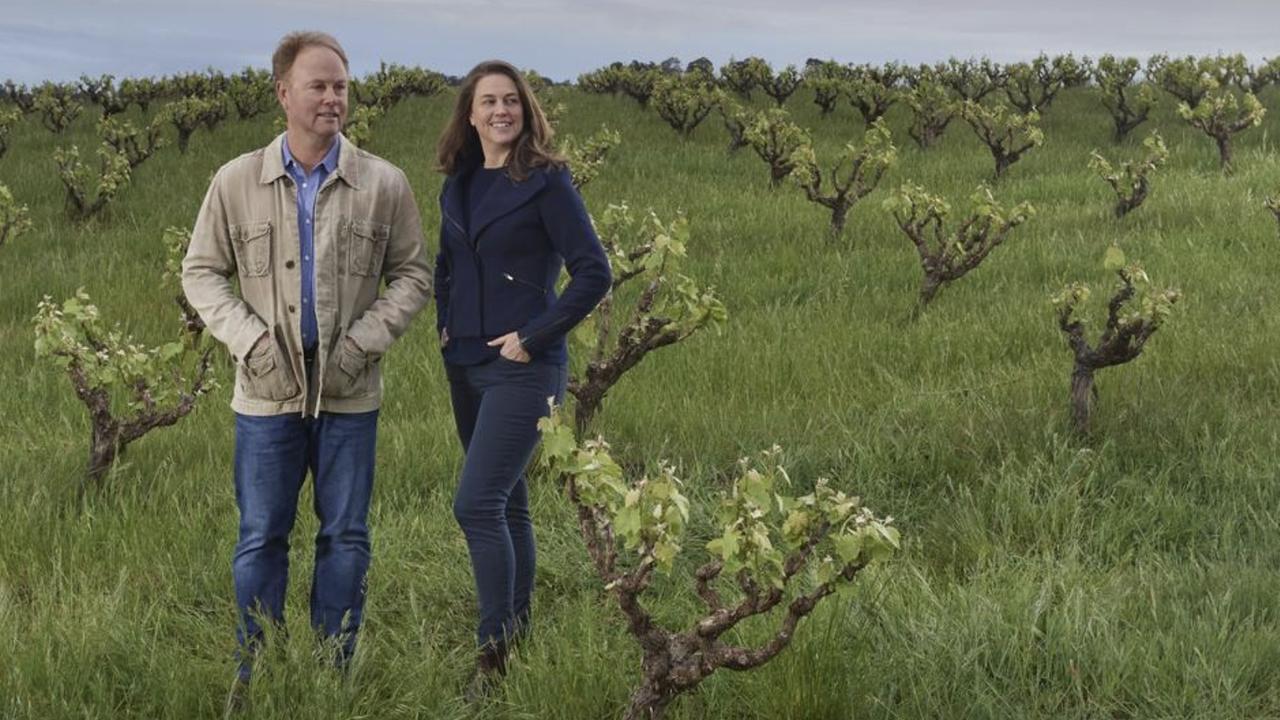It’s a beauty: Sustainable Garden Design’s project in Nedlands, Perth
This cleverly designed garden in suburban Perth is packed with native plants, produce – and social spaces.
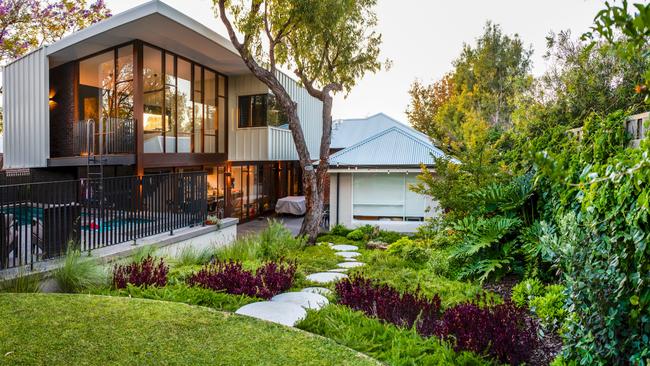
Perth landscape designer Andrew Beck loves his local West Australian plant species. “We just don’t use them enough in our gardens,” he says. “I find banksias otherworldly – they’re so idiosyncratic in their flower and leaf shapes and colours that they can give a garden a sense of surreal exoticism.”
The owners of this garden in Perth’s Nedlands had local natives high on their wish list in order to attract wildlife. They also wanted a highly productive garden “with lots of fruit trees and spaces to grow as many edibles as possible”. Beck, who runs Sustainable Garden Design, was chosen to create such a garden around a newly built house for the family of four – two commercial airline pilots and their teenage son and daughter.
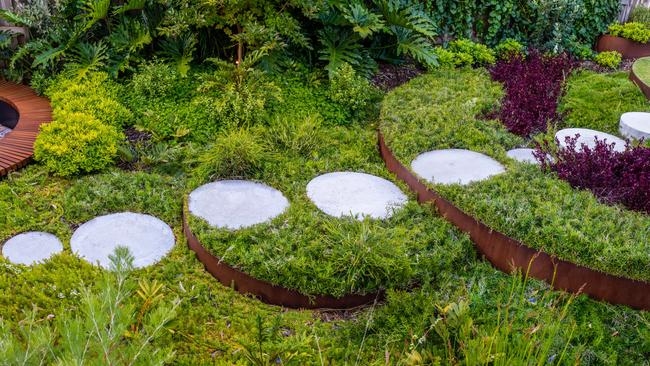
Beck’s brief included “just enough lawn for a cricket pitch” and plenty of spaces for socialising in the garden. “It has always been a design focus of mine to create front gardens with functional outdoor living spaces that allow engagement with the local street life,” he says. “The clients requested a space in their front garden to catch up informally with neighbours, so we created a central, circular grass area with circular satellite concrete benches orbiting its outer fringes. Each Sunday for the past 18 months, the kids and parents in the street have used the space as a social hub to get together and connect.”
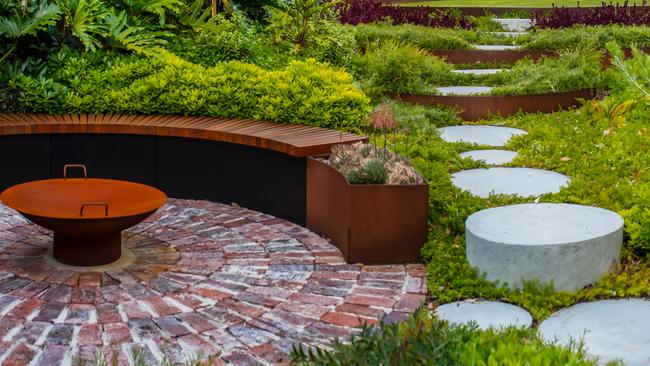
The copper insets are there to add visual interest, although Beck points out that the copper also repels snails and slugs. Plants in the front garden include numerous southwest species of banksia such as B. blechnifolia, B. praemorsa, B. lindleyana and B prionotes with Grevillea thelemanniana as a massed groundcover. Beck added Leucadendron Safari Sunset for “a splash of colour”, even though it’s a South African plant.
In the back garden, the edible components fill a dedicated section of curved, raised planters of concrete and weathering steel. There are pear, pomegranate, bay, finger lime and banana trees as well as artichokes and a changing selection of vegetables. Along one side is a row of six feijoas, which Beck loves for their foliage and edible flowers as well as the delicious fruit.
He gained an extra 15sqm of growing space by converting a 50cm strip of the original driveway that ran almost the entire length of the block. Within this sun-drenched space thrive espaliered lime, lemon and apple trees, punctuated with topiary rosemary and underplanted with clusters of herbs and cherry tomatoes.
To attract birds, especially smaller ones, Beck integrated local plant species of varying heights and sizes, layering them to provide protective nooks and crannies and seasonal food sources. The self-confessed “plant tragic” is a huge fan of the nearby Kings Park and Botanic Garden, whose breeding programs focus on improving local species in terms of flower size, colour and quantity, as well as disease resistance and longevity, while still being attractive to local fauna. “They’re revered for the way they promote and develop West Australian plants,” Beck says.
“Increasingly I have a strong sense that we need to be using local flora to support the local fauna. Even small patches can help create vital wildlife corridors.”
Q&A
Does white oil applied to indoor plants to combat pests and polish leaves inhibit gas exchange for photosynthesis? David Cooper, Malanda, Qld
Modern horticultural oils such as PestOil are thinner and more purified than the old white oils, and hence safer for plants. Heavy oils or thick applications could block the leaf stomata where gaseous exchange takes place and water evaporates, thus reducing efficiency of photosynthesis and transpiration. However, most plants also have stomata on their leaf undersides. Washing leaves by hand or in the shower or in rain is the best way to keep them clean and healthy. Can you use white oil and foliar fertiliser at the same time, or does the white oil stop the fertiliser penetrating? John Fidden, Bundaberg, Qld
Soluble nutrients are not absorbed through the leaf stomata but via micropores (less than 1nm) in the leaf cuticle. This suggests oil sprays at the same time would be counter-productive. Feeding plants through foliar sprays is not as efficient as through the roots; translocation of nutrients is also limited. It’s best used as a supplement for certain micronutrient deficiencies. My mature Gardenia thunbergia finally produced a seed pod two years ago. Can I use this to grow plants for my children? Judy, Melbourne
The hard seed pods can last on the tree for years. Break it open with a hammer and sow seeds into pots of seed-raising mix in spring to mid-summer. They germinate in 4-6 weeks.
Send your questions to: helenyoungtwig@gmail.com or Helen Young, PO Box 3098,
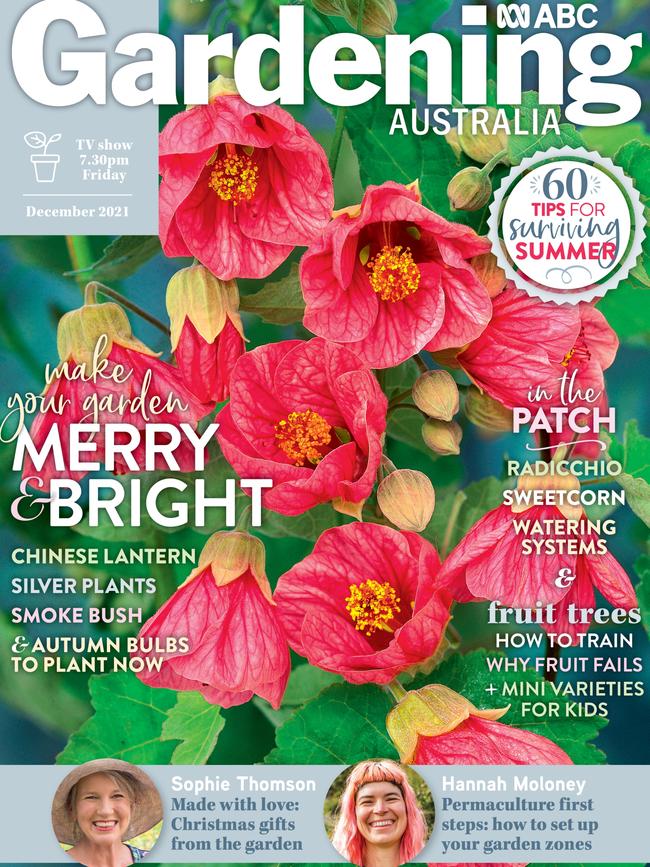
Willoughby North, NSW 2068. Website: helenyoung.com.au. The best question for December/January wins a 12-month subscription to ABC Gardening Australia and ABC Organic Gardener magazines, worth $109; abcmagazines.com.au. November’s winner is Lynette Howell of Brisbane for her question about citrus.



